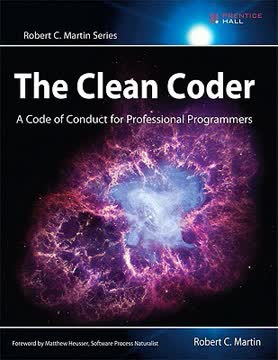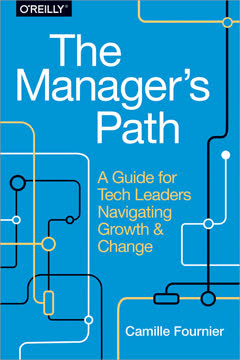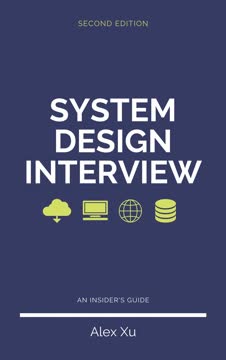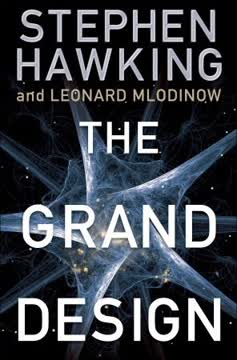نکات کلیدی
1. تسلط بر ساختارهای داده و الگوریتمهای بنیادی برای مصاحبههای فنی
سؤالات برنامهنویسی معمولاً دشوار هستند. اگر همه (یا حتی بیشتر افراد) به یک سؤال خاص به سرعت پاسخ دهند، شرکت از پرسیدن آن سؤال صرفنظر میکند زیرا اطلاعاتی دربارهی متقاضیان به آنها نمیدهد.
شایستگیهای اصلی. مصاحبههای فنی بر ارزیابی درک نامزدها از ساختارهای داده و الگوریتمهای بنیادی تمرکز دارند. موضوعات رایج شامل لیستهای پیوندی، درختها، گرافها، الگوریتمهای مرتبسازی و تکنیکهای جستجو است. مصاحبهکنندگان از این مسائل برای ارزیابی مهارتهای حل مسئله، توانایی کدنویسی و عمق دانش استفاده میکنند.
انواع مسائل. انتظار داشته باشید سؤالاتی دربارهی پیادهسازی ساختارهای داده از ابتدا، دستکاری ساختارهای موجود و بهکارگیری الگوریتمها برای حل مسائل خاص مطرح شود. مثالها شامل معکوس کردن یک لیست پیوندی، پیدا کردن پایینترین جد مشترک در یک درخت دودویی یا پیادهسازی جستجوی عمق اول در یک گراف است.
استراتژی آمادهسازی.
- مرور ساختارهای داده اصلی: آرایهها، لیستهای پیوندی، پشتهها، صفها، درختها و گرافها
- تمرین الگوریتمهای رایج: مرتبسازی، جستجو، پیمایش و بازگشت
- پیادهسازی ساختارهای داده و الگوریتمها از ابتدا برای تثبیت درک
- حل مسائل تمرینی با تمرکز بر بهینهسازی پیچیدگی زمان و فضا
2. رویکردی سیستماتیک به مسائل برنامهنویسی و ارتباط تفکر خود
تعاملپذیری کلیدی است. کدی که در مصاحبه مینویسید احتمالاً تنها نمونهای از کد شماست که مصاحبهکنندهتان میبیند. اگر کد زشتی بنویسید، مصاحبهکننده فرض میکند که شما همیشه کد زشت مینویسید.
رویکرد ساختاریافته. یک روش سیستماتیک برای برخورد با مسائل مصاحبه توسعه دهید. با روشن کردن بیان مسئله و الزامات شروع کنید. مسئله را به اجزای کوچکتر تقسیم کنید و موارد حاشیهای را در نظر بگیرید. قبل از شروع به کدنویسی، راهحلهای ممکن و مزایا و معایب آنها را مورد بحث قرار دهید.
ارتباط واضح. در طول مصاحبه، فرآیند تفکر خود را بیان کنید. دلایل، فرضیات و تصمیمگیریهای خود را در حین کار بر روی مسئله توضیح دهید. این کار مهارتهای حل مسئله شما را نشان میدهد و به مصاحبهکننده اجازه میدهد در صورت نیاز راهنمایی کند.
مراحل حل مسئله:
- درک کامل مسئله
- روشن کردن هرگونه ابهام یا محدودیت
- در نظر گرفتن چندین رویکرد و بحث دربارهی مزایا و معایب
- انتخاب یک رویکرد و ترسیم راهحل
- پیادهسازی راهحل و توضیح کد در حین نوشتن
- آزمایش راهحل با ورودیهای نمونه و موارد حاشیهای
- تحلیل پیچیدگی زمان و فضا برای راهحل خود
3. پیادهسازی و دستکاری لیستهای پیوندی بهطور کارآمد
حذف و درج نیاز به یک اشارهگر یا مرجع به عنصر بلافاصله قبل از محل حذف یا درج دارد.
عملیات بنیادی. لیستهای پیوندی به دلیل سادگی و توانایی آنها در آزمایش مهارتهای دستکاری اشارهگر، معمولاً در مصاحبههای فنی مورد توجه قرار میگیرند. بر روی عملیات پایهای مانند درج، حذف و پیمایش برای لیستهای پیوندی تکگانه و دوگانه تسلط پیدا کنید.
چالشهای رایج. آماده باشید تا با موارد حاشیهای مانند لیستهای خالی، لیستهای تکعنصری و عملیات در سر یا دم لیست برخورد کنید. تمرین پیادهسازی عملیات پیچیدهتر مانند معکوس کردن یک لیست پیوندی، شناسایی چرخهها یا پیدا کردن عنصر n-ام از انتها را فراموش نکنید.
تکنیکهای کلیدی:
- استفاده از گرههای موقتی برای سادهسازی عملیات سر و دم
- پیادهسازی تکنیک دوندگی (اشارهگرهای کند و تند) برای شناسایی چرخهها و پیدا کردن عناصر میانی
- تسلط بر رویکردهای بازگشتی برای مسائلی مانند معکوس کردن یک لیست پیوندی یا ادغام لیستهای مرتب
- درک زمان مناسب برای استفاده از لیستهای پیوندی تکگانه در مقابل دوگانه بر اساس الزامات مسئله
4. درک ساختارهای درختی و الگوریتمهای پیمایش
بسیاری از عملیات درختی میتوانند بهصورت بازگشتی پیادهسازی شوند. پیادهسازی بازگشتی ممکن است کارآمدترین نباشد، اما معمولاً بهترین نقطه شروع است.
اصول درخت. با انواع مختلف درختها، از جمله درختهای دودویی، درختهای جستجوی دودویی (BST) و هپها آشنا شوید. خواص و مزایای هر ساختار را درک کنید. بر روی الگوریتمهای پیمایش درخت تسلط پیدا کنید: پیمایش بهصورت درونسفید، پیشسفید و پسسفید.
مسائل رایج. تمرین حل مسائل معمول مرتبط با درخت مانند پیدا کردن ارتفاع درخت، بررسی تعادل درخت و پیادهسازی پیمایش سطحی را فراموش نکنید. آماده باشید تا با BSTها برای عملیات جستجو، درج و حذف کار کنید.
مفاهیم کلیدی:
- پیادهسازیهای بازگشتی در مقابل تکراری از پیمایشهای درخت
- درختهای متعادل در مقابل نامتعادل و تأثیر آنها بر عملکرد
- چرخشهای درختی برای حفظ تعادل در BSTها
- عملیات هپ: درج، حذف و هپسازی
- ساختار دادهی تری برای عملیات کارآمد روی رشتهها
5. بهکارگیری مفاهیم گراف برای حل مسائل پیچیده
گرافها معمولاً برای مدلسازی مسائل دنیای واقعی که مدلسازی آنها با سایر ساختارهای داده دشوار است، استفاده میشوند.
نمایشهای گراف. با روشهای مختلف نمایندگی گرافها، از جمله لیستهای همسایگی و ماتریسهای همسایگی آشنا شوید. بدانید که هر نمایندگی را بر اساس الزامات مسئله و ویژگیهای گراف (کمتراکم در مقابل پرتراکم) چه زمانی باید استفاده کنید.
الگوریتمهای گراف. بر روی الگوریتمهای بنیادی گراف مانند جستجوی عمق اول (DFS)، جستجوی عرض اول (BFS) و الگوریتمهای کوتاهترین مسیر (دیکسترا، بلمن-فورد) تسلط پیدا کنید. آماده باشید تا این الگوریتمها را برای حل مسائلی مانند پیدا کردن اجزای متصل، شناسایی چرخهها یا مرتبسازی توپولوژیک بهکار ببرید.
استراتژیهای حل مسئله گراف:
- شناسایی اینکه آیا مسئله به گراف جهتدار یا بدون جهت نیاز دارد
- در نظر گرفتن گرافهای وزنی در مقابل بدون وزن برای مسائل مربوط به فاصله یا هزینه
- استفاده از DFS برای مسائلی که شامل پیدا کردن مسیر یا شناسایی چرخه است
- بهکارگیری BFS برای مسائل کوتاهترین مسیر در گرافهای بدون وزن
- پیادهسازی ساختار دادهی اتحاد-یافت برای مسائل مجموعههای جدا
6. بهینهسازی راهحلها با استفاده از تحلیل Big-O و تعادل زمان-فضا
اگرچه این فرآیند شامل دو بار عبور از لیست است، اما هنوز O(n) است. این روش تنها به چند متغیر نیاز دارد، بنابراین این روش بهبود قابل توجهی نسبت به تلاش قبلی است.
تحلیل زمان اجرا. در تحلیل پیچیدگی زمان و فضا برای راهحلهای خود با استفاده از نماد Big-O مهارت پیدا کنید. تأثیرات کلاسهای مختلف پیچیدگی (مانند O(1)، O(log n)، O(n)، O(n log n)، O(n^2)) بر عملکرد الگوریتم را درک کنید.
تکنیکهای بهینهسازی. یاد بگیرید که چگونه استراتژیهای بهینهسازی رایج را شناسایی و بهکار ببرید، مانند استفاده از ساختارهای داده مناسب، حذف کارهای غیرضروری و بهرهبرداری از خواص خاص مسئله. آماده باشید تا دربارهی تعادلهای بین پیچیدگی زمان و فضا بحث کنید.
رویکردهای کلیدی بهینهسازی:
- استفاده از جدولهای هش برای جستجوی میانگین O(1)
- بهکارگیری جستجوی دودویی بر روی دادههای مرتب برای زمان جستجوی O(log n)
- پیادهسازی برنامهنویسی پویا برای جلوگیری از محاسبات تکراری
- استفاده از تکنیکهای دو اشارهگر برای مسائل آرایه و رشته
- در نظر گرفتن تحلیل آمورتیز برای ساختارهای داده مانند آرایههای پویا
7. تمرین بازگشت و رویکردهای تکراری برای مسائل درخت و گراف
گاهی اوقات الگوریتمهای بازگشتی میتوانند با الگوریتمهای تکراری که همان کار را بهطور بنیادی با استفاده از ساختارهای داده مختلف انجام میدهند، جایگزین شوند.
راهحلهای بازگشتی. درک قوی از حل مسئله بهصورت بازگشتی، بهویژه برای پیمایشهای درخت و گراف، توسعه دهید. تمرین شناسایی موارد پایه و مراحل بازگشتی را فراموش نکنید. از معایب احتمالی بازگشت، مانند سرریز پشته برای بازگشت عمیق آگاه باشید.
جایگزینهای تکراری. یاد بگیرید که چگونه راهحلهای بازگشتی را به راهحلهای تکراری با استفاده از ساختارهای دادهی پشتهای صریح تبدیل کنید. این مهارت برای بهینهسازی پیچیدگی فضا و مدیریت ورودیهای بزرگ که ممکن است در پیادهسازیهای بازگشتی باعث سرریز پشته شود، ارزشمند است.
تعادل رویکردها:
- از بازگشت برای سادگی و زیبایی در حل اولیه مسئله استفاده کنید
- در هنگام کار با ورودیهای بزرگ یا فضای محدود پشته، به راهحلهای تکراری تبدیل شوید
- پیادهسازی بهینهسازی بازگشت دمی در صورت امکان
- درک تعادلهای بین راهحلهای بازگشتی و تکراری از نظر خوانایی، نگهداری و عملکرد
- هر دو رویکرد را تمرین کنید تا در حل مسئله انعطافپذیری پیدا کنید
آخرین بهروزرسانی::
FAQ
1. What is Programming Interviews Exposed: Secrets to Landing Your Next Job by John Mongan about?
- Comprehensive interview guide: The book is a step-by-step manual for preparing for technical programming interviews, focusing on real-world problems and the entire hiring process.
- Emphasis on problem-solving: It teaches readers how to approach, analyze, and solve programming problems, rather than just memorizing answers.
- Covers full interview journey: From self-assessment and market research to technical questions, nontechnical questions, and offer negotiation, the book provides a holistic view.
- Practical coding focus: Examples use C, C++, and Java, but the emphasis is on data structures and algorithms, making it accessible to most programmers.
2. Why should I read Programming Interviews Exposed by John Mongan?
- Effective interview preparation: The book demystifies the unique challenges of programming interviews and equips readers with proven strategies and mindsets.
- Insight into interviewer expectations: It reveals what interviewers look for, including communication, problem-solving approach, and handling of tricky or ambiguous questions.
- Broad and deep coverage: Topics range from algorithms and data structures to concurrency, OOP, design patterns, databases, and even nontechnical questions.
- Ongoing learning support: The book encourages continuous practice and offers additional resources like a mailing list and app for further preparation.
3. What are the key takeaways from Programming Interviews Exposed by John Mongan?
- Problem-solving over memorization: Success comes from understanding problem types and developing a systematic approach, not just rote learning.
- Mastery of fundamentals: Deep knowledge of data structures, algorithms, and core programming concepts is essential for most interview questions.
- Communication is critical: Explaining your thought process clearly and methodically is as important as arriving at the correct answer.
- Nontechnical skills matter: Fit, experience, and the ability to answer behavioral questions can be decisive, even for technically strong candidates.
4. How does Programming Interviews Exposed by John Mongan recommend preparing before starting a job search?
- Know yourself: Assess your programming interests, strengths, and career goals to target roles that fit your passions and skills.
- Understand the market: Research current job trends, in-demand technologies, and outsourcing risks using social networks, job sites, and professional courses.
- Develop marketable skills: Build credentials through education, certifications, side projects, and internships to stand out to recruiters.
- Manage your online profile: Keep LinkedIn and other professional profiles up-to-date and positive, as recruiters often check these before interviews.
5. What strategies does Programming Interviews Exposed by John Mongan suggest for solving programming problems in interviews?
- Clarify and understand: Always ask questions to fully understand the problem and work through simple examples before coding.
- Choose the right tools: Analyze possible solutions, discuss trade-offs, and select the most efficient algorithms and data structures, explaining your choices.
- Communicate and iterate: Talk through your thought process, write clean code, test with examples, and handle edge cases, showing adaptability and openness to hints.
- Demonstrate critical thinking: Interviewers value candidates who can analyze performance, consider alternatives, and respond well to feedback.
6. How does Programming Interviews Exposed by John Mongan cover linked lists and their importance in interviews?
- Fundamental data structure: Linked lists test understanding of pointers, dynamic memory, and are especially relevant in C and C++ interviews.
- Varieties and operations: The book covers singly, doubly, and circular linked lists, focusing on traversal, insertion, deletion, and pointer management.
- Common interview problems: Examples include implementing stacks, deleting nodes, finding mth-to-last elements, and detecting cycles, with detailed solutions.
- Emphasis on edge cases: Mastery of linked list operations and special cases is essential for success in technical interviews.
7. What does Programming Interviews Exposed by John Mongan teach about trees and graphs for interviews?
- Tree fundamentals: The book explains hierarchical structures, especially binary trees and binary search trees, and covers recursive algorithms for traversals and searches.
- Graph complexity: It introduces graphs as generalizations of trees, discussing representations, BFS/DFS searches, and practical problems like the "Six Degrees of Kevin Bacon."
- Algorithmic focus: Emphasis is placed on recursive and iterative solutions, runtime analysis, and handling cycles in graphs.
- Interview relevance: Understanding these concepts is crucial for tackling complex data structure problems in interviews.
8. How are arrays and strings addressed in Programming Interviews Exposed by John Mongan?
- Array properties: The book discusses O(1) access, O(n) insertion/deletion, static vs. dynamic arrays, and language-specific behaviors.
- String handling: It covers mutability, encoding (ASCII/Unicode), and efficient manipulation techniques, highlighting differences across languages.
- Common pitfalls: Issues like bounds checking, memory management, and off-by-one errors are explained with practical advice.
- Problem examples: Classic interview problems such as finding the first nonrepeated character, reversing words, and integer-string conversions are included.
9. What guidance does Programming Interviews Exposed by John Mongan provide on recursion and its use in interviews?
- Recursion basics: The book defines recursion, explains base and recursive cases, and uses factorial as a simple example.
- Recursive vs. iterative: While recursion can be elegant, iterative solutions are often more efficient; the book advises starting with recursion and considering alternatives.
- Practical applications: It covers recursive algorithms for binary search, permutations, combinations, and telephone words, emphasizing clear understanding and implementation.
- Avoiding pitfalls: The importance of reaching base cases and preventing infinite recursion is stressed.
10. Which sorting algorithms and concepts are explained in Programming Interviews Exposed by John Mongan?
- Classic algorithms: Selection sort, insertion sort, quicksort, and merge sort are explained with their mechanisms, time complexities, and trade-offs.
- Advanced topics: The book covers multi-key sorting, stable vs. unstable sorts, and optimized quicksort implementations for edge cases.
- Algorithm selection: Guidance is given on choosing the right sort based on data size, memory, order, and stability requirements.
- Special problems: Pancake sorting and merging sorted lists are discussed to illustrate algorithmic thinking beyond standard sorts.
11. How does Programming Interviews Exposed by John Mongan address concurrency, object-oriented programming, and design patterns?
- Concurrency fundamentals: The book explains threads, synchronization (monitors, semaphores), deadlocks, and classic problems like Dining Philosophers, with practical code examples.
- OOP principles: It reviews classes, encapsulation, inheritance, polymorphism, interfaces vs. abstract classes, and virtual methods, clarifying their roles in interviews.
- Design patterns: Creational (Singleton, Builder, Factory), behavioral (Iterator, Observer), and structural (Decorator) patterns are summarized, with advice on when and why to use them.
- Practical relevance: Understanding these concepts helps candidates discuss architecture and design decisions confidently with interviewers.
12. What nontechnical, database, and bit manipulation topics are covered in Programming Interviews Exposed by John Mongan?
- Nontechnical questions: The book stresses the importance of experience, fit, goals, and salary discussions, offering strategies for positive, specific answers.
- Database fundamentals: It covers relational concepts, SQL commands (SELECT, JOIN, GROUP BY), transactions (ACID), and tricky SQL problems.
- Bit manipulation: Binary notation, bitwise operators, shift operations, and classic problems like counting 1 bits and determining endianness are explained with efficient algorithms.
- Résumé and profile tips: Guidance is provided on writing effective technical résumés and managing your online presence for job search success.
نقد و بررسی
کتاب Programming Interviews Exposed به شدت برای برنامهنویسان جویای کار و فارغالتحصیلان تازه توصیه میشود. خوانندگان از پوشش جامع آن در زمینهی ساختارهای داده، الگوریتمها و آمادگی برای مصاحبهها تمجید میکنند. این کتاب با ارائهی توضیحات دقیق و روشهای حل مسئلهی گام به گام، برای آمادگی در مصاحبههای فنی ارزشمند است. در حالی که برخی آن را قدیمی یا در برخی زمینهها ناقص میدانند، بسیاری از آن به عنوان عاملی که به آنها در یافتن شغل در شرکتهای برتر فناوری کمک کرده است، یاد میکنند. این کتاب به ویژه برای مرور مفاهیم بنیادی و توسعهی مهارتهای حل مسئله مفید است. برخی از خوانندگان پیشنهاد میکنند که برای آمادگی کاملتر در مصاحبهها، از منابع دیگر نیز استفاده شود.
Similar Books











